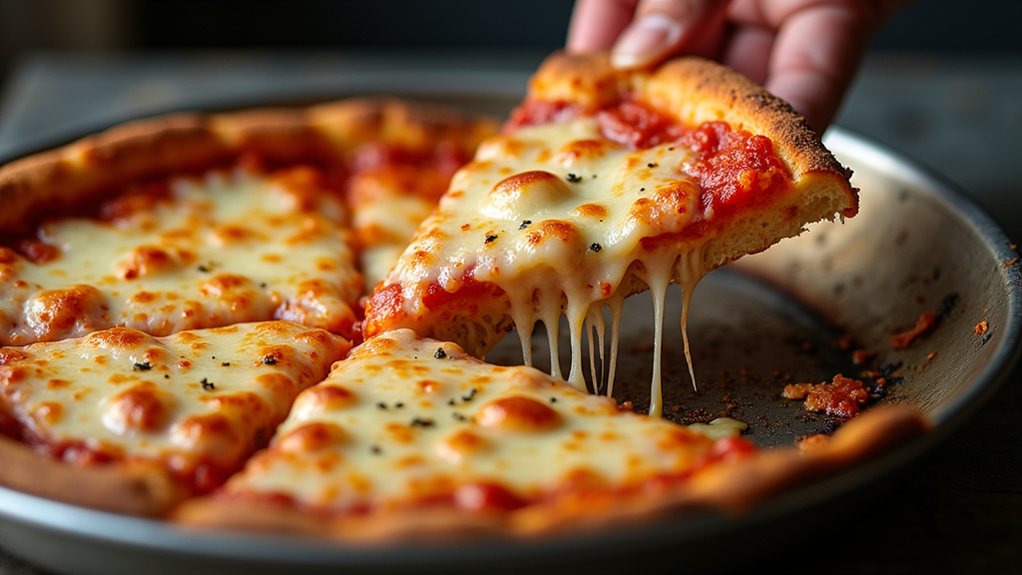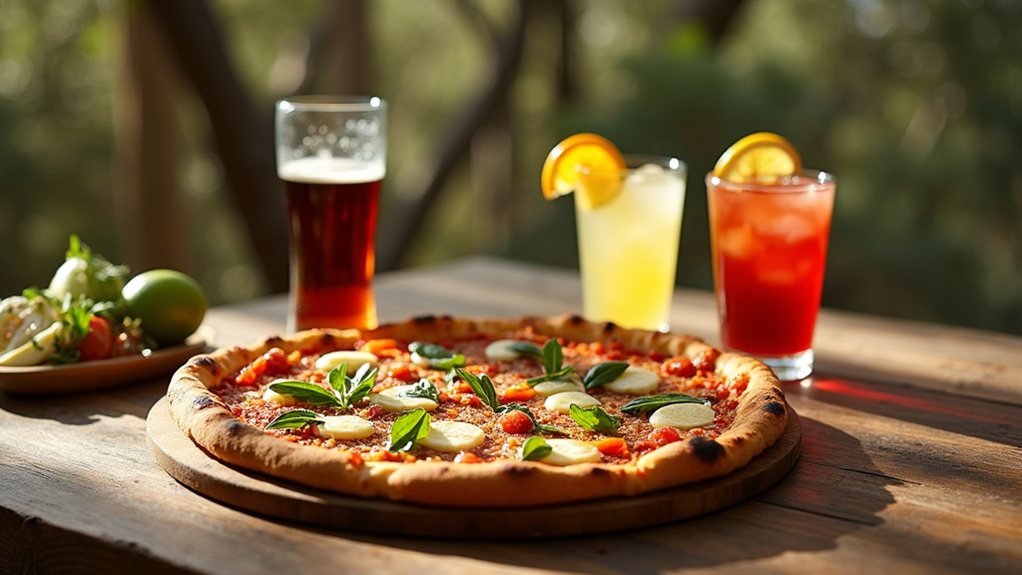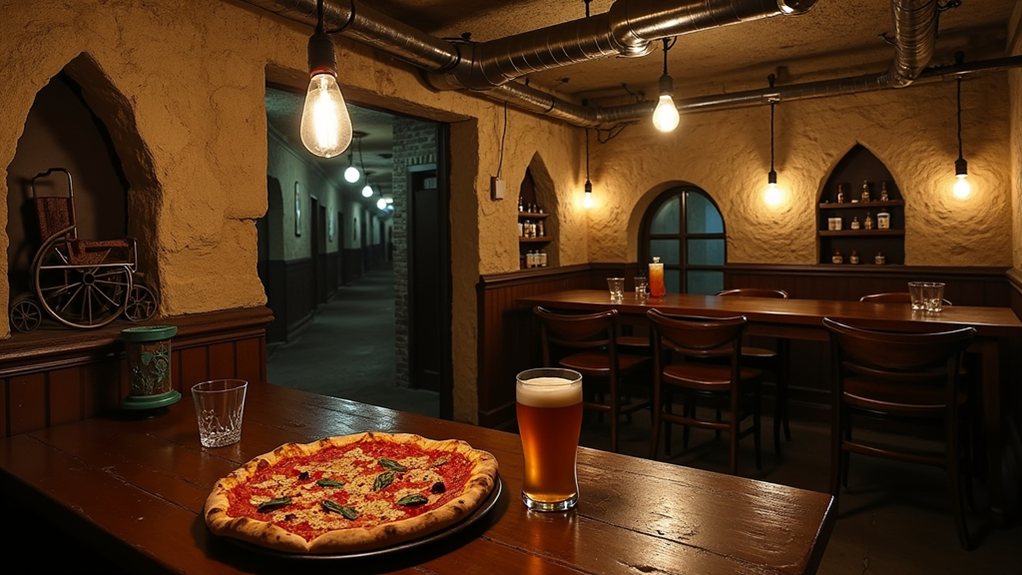Argentinian pizza stands apart from its global cousins, boasting a distinctly thick crust that reaches up to 2 centimeters in height. This generous foundation, baked in steel pans similar to Detroit-style pizza, creates a perfect textural contrast—crispy exterior with a chewy interior. While Italian immigrants brought the basic concept, Argentinians transformed it with lavish cheese combinations and unconventional toppings like palmitos and hard-boiled eggs. What sparked this distinctive evolution in Buenos Aires's vibrant pizzerias?
The Fusion of Italian Heritage and Local Traditions

When Italian immigrants arrived in Argentina in the late 19th and early 20th centuries, they brought with them culinary traditions that would forever transform the country's food landscape.
The abundance of local ingredients inspired these newcomers to reinvent familiar dishes, creating heartier versions of their homeland favorites.
Pizzas, in particular, underwent a remarkable evolution as Genoese and other Italian groups adapted recipes to suit Argentine tastes.
What emerged was a distinctive style featuring thicker crusts and generous toppings, quite unlike their Italian predecessors.
Similar to Chicago-style deep dish, Argentine pizza features a sturdy crust that can support substantial layers of cheese and sauce.
The fusion created iconic varieties like fugazzeta, a cheese-stuffed dough topped with caramelized onions that exemplifies this cultural blend.
Today, these adaptations have become so deeply ingrained in Argentine culture that they're indistinguishable from native traditions, with pizzerias serving as community gathering spots where this delicious heritage continues to thrive.
Buenos Aires now boasts the highest concentration of pizzerias per inhabitant in the world, showcasing the enduring impact of this culinary transformation.
Thick Crust Origins: What Makes Argentinian Pizza Unique

Unlike its thin and crispy Italian cousins, Argentinian pizza stands out globally for its distinctively thick, chewy crust that often reaches up to 2 centimeters in height. This unique style emerged from the massive Italian immigration wave between 1870 and 1960, when pioneers like Nicola Vaccarezza and Augustine Banchero adapted traditional recipes to local tastes.
The signature "pizza al molde" style, with its spongy yet crisp-bottomed crust, developed in neighborhoods like La Boca where Italian culinary traditions merged with Argentine abundance. The meticulously crafted dough creates a perfect texture and balance that elevates the entire culinary experience. Baked in steel pans that create the perfect balance between crunch and softness, these pizzas transformed from simple immigrant food into a cultural institution. Similar to Detroit-style pizza, Argentinian pizza uses rectangular pans that help create distinctive crispy edges that many pizza enthusiasts crave.
Renowned establishments like Güerrín and Banchero continue this legacy, showcasing how Argentine pizza broke free from its Italian roots to become something entirely its own.
Exploring the Rich Toppings and Cheese Varieties

Argentinian pizza delights with its extraordinary abundance of cheese and distinctive toppings that tell a story of cultural fusion on every plate. While mozzarella forms the cornerstone of many creations, locals frequently blend it with provolone and occasionally Roquefort for a more complex flavor profile.
These cheese combinations are so generous that many traditional varieties, especially the cheese-laden Fugazzeta, require utensils to eat. Much like researchers analyzing model outputs for performance improvements, Argentine pizzaiolos carefully evaluate their cheese ratios to perfect their recipes.
The toppings showcase a perfect marriage of Italian traditions and Argentine innovations, with jamón (ham), caramelized onions, and fresh basil featuring prominently. Unlike the customizable pizzas common elsewhere, Argentine pizzerias typically offer set topping combinations that have been perfected over generations.
Some unconventional additions include palmitos (palm hearts) and hard-boiled eggs, reflecting the nation's willingness to experiment while honoring tradition. This approach to culinary creativity mirrors the gourmet pizza scene worldwide, where chefs constantly push boundaries with unexpected ingredient pairings.
Fugazzeta and Fugazza: Signature Onion-Based Masterpieces

Masterpieces of Argentinian culinary heritage, fugazzeta and fugazza stand as iconic, onion-based pizza variations that delight both locals and visitors alike.
Credited to Juan Banchero between 1893 and 1932, these dishes reflect the Italian immigrant influence in Buenos Aires.
Fugazza features a thick, focaccia-like crust topped with sweet onions, olive oil, and oregano, while fugazzeta adds another dimension by sandwiching mozzarella between two layers of dough.
Unlike traditional pizza, neither incorporates tomato sauce, allowing the caramelized onions and cheese to take center stage. The preparation often involves soaking onions in cold salt water to amplify their natural sweetness before baking.
Recently featured on Netflix's "Street Food: Latin America," these Argentinian specialties continue to gain international recognition while remaining deeply rooted in Buenos Aires' vibrant food culture.
From La Boca to Corrientes: The Gastronomic Journey of Pizza Porteña

The streets of Buenos Aires tell a story of pizza evolution that spans neighborhoods and generations, connecting the immigrant-rich port district of La Boca to the bustling entertainment corridor of Avenida Corrientes.
Each zone has contributed its own chapter to the city's pizza narrative, with La Boca's early Italian immigrants establishing the foundations of what would become pizza porteña.
Their thick-crusted creations, adorned with generous portions of mozzarella, gradually migrated northward through the city.
Pizza as a Cultural Icon: Social Significance in Argentine Life

Embedded within the social fabric of Argentine society, pizza represents far more than a mere culinary delight—it stands as a cultural institution that has shaped communal experiences for generations.
Traditional pizzerias like Güerrín and Banchero have transcended their role as eateries to become cultural landmarks where social bonds are formed and strengthened.
The significance of pizza in Argentine culture is evident through:
- The tradition of eating pizza while standing, a unique social practice that encourages casual conversation
- Argentina's distinction of having the highest number of pizzerias per inhabitant globally
- The integration of pizza into vital social gatherings, symbolizing community and belonging
- The pairing with fainá, creating a distinctive culinary tradition that reflects the nation's multicultural heritage
FAQs
How Does Argentine Pizza Compare Nutritionally to American or Italian Styles?
Argentine pizza offers a nutritional middle ground between heavier American styles and lighter Italian varieties, with moderate calorie content and a balanced macronutrient profile emphasizing quality cheese over excessive toppings.
Are There Any Gluten-Free Options for Argentine-Style Thick Crust Pizza?
Yes, gluten-free Argentine-style thick crust pizza exists at Almacén de Pizzas and Rica & Celi in Buenos Aires. Other cities like Mendoza offer options through specialized establishments, though cross-contamination remains a concern.
What Wines Pair Best With Traditional Argentine Pizza Varieties?
Argentinian pizza varieties pair excellently with Malbec for meat-heavy options, Chianti for cheese-focused types, and Prosecco for vegetable toppings. Local Torrontés offers a revitalizing complement to the fugazzetta's rich flavors.
How Has Argentine Pizza Influenced Other South American Pizza Styles?
Argentine pizza has shaped South American styles through its distinctive thick crusts, abundant cheese usage, and creative toppings, inspiring countries like Uruguay to adopt similar approaches while incorporating local ingredients.
What Are the Most Popular Dessert Pizzas in Argentine Cuisine?
Dessert pizzas are not traditionally part of Argentine cuisine. While Argentines enjoy sweets like dulce de leche and alfajores, they haven't historically incorporated these flavors into pizza form.








